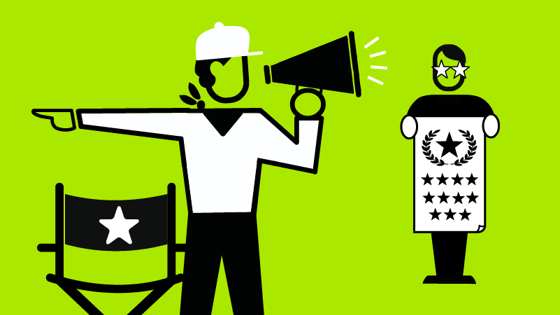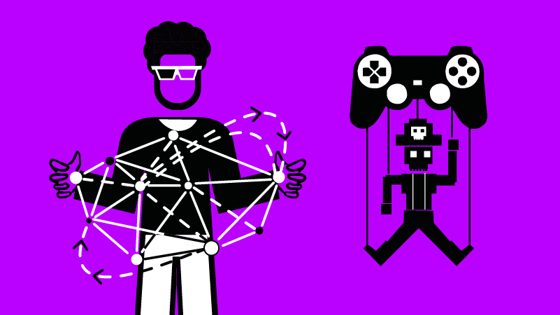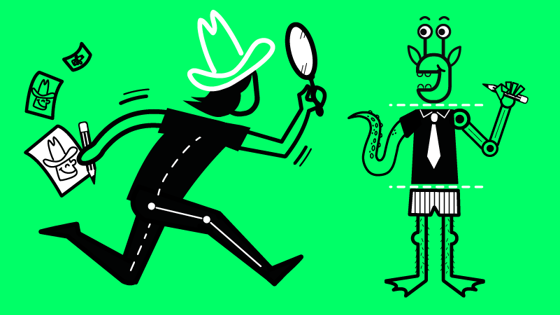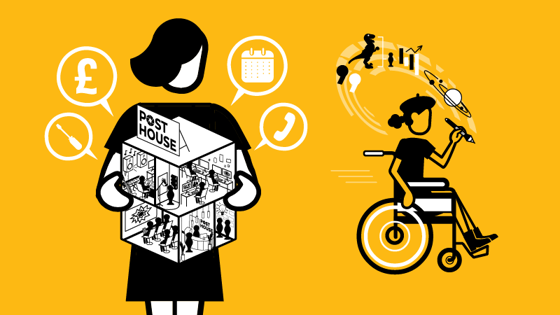Unscripted TV
Hair and make-up designer (Unscripted TV)
Also known as: Hair designer, Make-up designer

What does a hair and make-up designer do?
The hair and make-up designer is a celebrity’s secret weapon. They ensure presenters, and all the other contributors appearing on camera, look their very best on the show.
Hair and make-up designers collaborate with production designers and work alongside the costume department to create an overall style and look that’s appropriate for the programme they are making. They research, sketch and may create mood boards to communicate suggested colours, textures and styles. On some entertainment shows, they may have a big cast for which to create a variety of looks.
They also work with the lighting department to find out how they intend to light a studio set or location and how those lights will impact on the appearance of skin and hair. Sometimes a contributor may be doing something very active under hot studio lights; other times they might be contending with the weather. Hair and make-up designers have to devise the best hair and make-up for the situation.
On big budget shows, hair and make-up designers recruit teams of hair stylists and make-up artists to ensure all hair and make-up is done on time. On smaller productions, they may work alone and do both jobs themselves, or with an assistant. Once shooting starts, they are often on set to touch up hair and make-up.
Many hair and make-up designers form very close relationships with presenters, celebrities and production teams and work with them on all their productions and other commercial work they may undertake. They are usually freelance, unless attached to large in-house art departments.
Read
What’s a hair and make-up designer good at?
- Styling hair: work with every type of hair, including wigs, extensions and facial hair and be able to use hair accessories, products and equipment, have an eye for detail and an ability to work fast
- Make-up: understand colour, shading, skin tone and texture, use make-up both for dramatic effect and simply to enhance features, hide blemishes and address skin problems; ensure make-up looks good under lights and doesn’t run, consider entire appearances, including hands, nails and any visible skin
- Knowledge of products: be up-to-date and able to use the latest products and equipment safely and effectively, understand allergies, how to test and what to do should a client react adversely
- Communication: work well with others, listen and respond to presenters’ or contributors’ needs, be trustworthy, have good relationships with PR and brands who may supply products
- Organisation: hire and manage multiple teams, schedules and budgets, often working on a number of different projects at the same time, work to tight deadlines and ensure the department works efficiently and to the best of their ability
Who does a hair and make-up designer work with?
Hair and make-up designers work closely with the costume designer to ensure they create a complete and coherent look. They also meet with the production designer, art director, producer and director to ensure they work with what the other departments are doing. Later in the process they have contact with studio and technical staff, members of production and the production management team regarding budgets and schedules. On big productions they will also manage their own team of people, but on smaller productions they may just work with an assistant.
How do I become a hair and make-up designer?
Hair and make-up designers usually enter the industry through one of three routes: hairdressing and barbering, beauty therapy or stage and theatre hair and make-up backgrounds. There are several different ways to get qualified before entering the industry. Once you have one of the following qualifications, you can apply to ScreenSkills’ Trainee Finder or find other ways of getting into the industry.
At school or college:
Take one of the following Level 3 qualifications:
- VTCT Diploma in Theatrical and Media Make-up
- City & Guilds Advanced Technical Diploma in Theatrical, Special Effects and Media Make-up Artistry
- City & Guilds Advanced Technical Diploma in Barbering
- City & Guilds Advanced Technical Diploma in Hairdressing
- City & Guilds Advanced Technical Diploma in Media Make-up Artistry
- City & Guilds Diploma in Barbering
- City & Guilds Diploma in Hairdressing for Colour Technicians
- City & Guilds Diploma in Hairdressing for Cutting and Styling Technicians
- City & Guilds Diploma in Women’s Hairdressing
- VTCT Diploma in Hairdressing for Colour Technicians
- VTCT Diploma in Theatrical and Special Effects and Hair and Media Make-up
- VTCT Diploma/Extended Diploma in Beauty Make-up Techniques
- VTCT Diploma/Extended Diploma in Hairdressing
- VTCT Diploma/Extended Diploma in Barbering
- VTCT Combined Diploma in Hairdressing
Get an apprenticeship:
An apprenticeship is a job with training, so it’s a great opportunity to earn as you learn. In the past, it has been challenging to find jobs as an apprentice within production companies, although there is now a hair, make-up, prosthetics and wigs apprenticeship standard specifically designed for people working in theatre or film and TV. It might also be worth looking for a job as an apprentice. This will help you develop your craft and create a body of work for a portfolio that you can use to find your way into film and TV drama at a later point. Check out What’s an apprenticeship? to learn more about apprenticeships and find an apprenticeship to learn how to find one in your region, or approach companies directly. Go to ScreenSkills information on apprenticeships for the main apprenticeship schemes in film and television.
Volunteer:
Volunteer to do hair and make-up for student films or amateur theatre. The more time you can spend doing hair or make-up, the better. Work on a make-up concession. Get a part-time job in a hair salon or barber shop. The more you can demonstrate having the necessary skills, the better.
Build a portfolio:
This is essential. Go to build your hair and make-up portfolio for details of how to do this.
Get work experience:
Try to get work experience by writing to hair and make-up professionals and asking if they offer any. Keep an eye out for work experience opportunities at the BBC, ITV, Channel 4, ITN, Sky and the PACT Indie Diversity Training Scheme.
Take a short course:
Hone your skills in hair and make-up by taking a specialist course. Go to the list of training courses recommended by ScreenSkills to see if there is one in hair and make-up. We recognise courses with our ScreenSkills Select award where they offer training in the relevant software, dedicated time to building a portfolio and have strong links with the TV industry.
Network:
Get to know people in the unscripted TV industry by attending events. Meet professionals and ask them questions about their work, while demonstrating interest in and knowledge of the industry. Offer to provide them with your professional contact details and try to stay in touch with them. Go to how to network well to learn how to do this.
Network online:
Create a LinkedIn profile. See if there are Facebook pages or other social media groups for people making unscripted TV in your area. There might even be groups for runners and trainees. Join them. Create a ScreenSkills profile. There are a lot of crewing agencies that will charge you to be on their books. Sign up to the free ones initially. Wales Screen, Northern Ireland Screen and other areas offer free crew databases. Find a film office near you and get connected. If you do sign up to paid sites, make sure they specialise in the areas in which you’re interested.
Search for jobs:
Research unscripted TV production companies that you’d like to work for and watch the programmes that they make. Regularly check their websites and job listings websites to see if they are advertising for roles. You can also send in a short speculative letter with your CV to the production manager. Register your CV on websites like The Talent Manager, which is used by most broadcasters and independent production companies when looking for staff. StartinTV offers tips on creating your CV and attending interviews, as well as some advice for your first day working in TV.
You might also be interested in…
Being a hair and make-up designer in film and TV drama.
Further resources
- Hair and Make-up Artist Handbook
- National Association of Screen Make-up Artists and Hairdressers
- Screen Face (product store)
- The Make-up Artist Magazine
- The Hairdressers Journal
- BBC Academy
- ITV Entry Careers
- Sky early careers
- 4Skills (Channel 4)
- The Grierson Trust
- StartinTV
- IMDb
- Televisual
- Broadcast
- Screen Daily
- ScreenSkills resources directory






